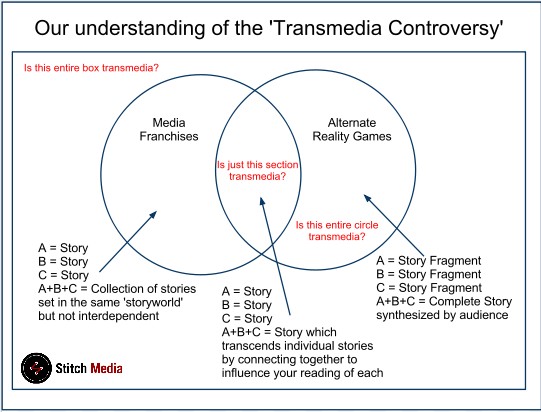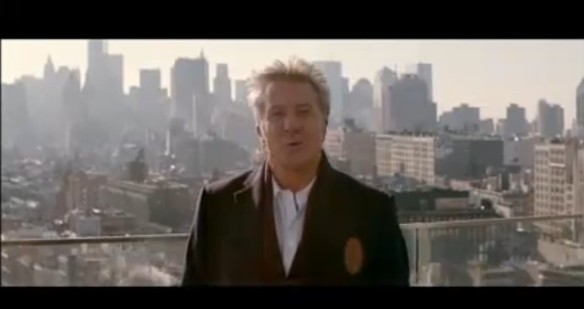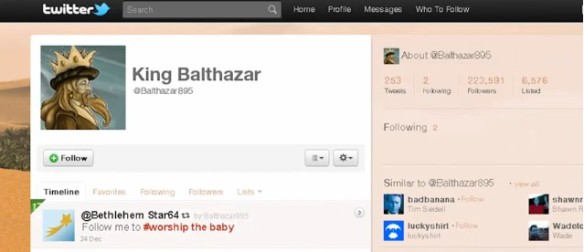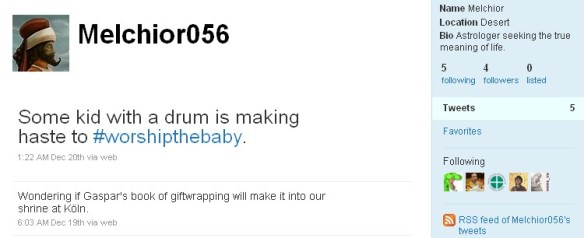Content is King.
I know because Bill Gates said so, and that’s also the session title for the Andrew Steele (of Funny or Die) keynote at the 2012 London Book Fair Digital Minds Conference.
In the 16 years since Mr Gates coined that phrase, a host of media and technology pundits, gurus and naysayers have debated as to where the real media crown belongs, but in the same breath as I’m not going to start THAT debate around the terminology of ‘transmedia’, I’m also not going to debate whether Bill Gates realized, in 1996 what he was kicking off when he made that speech and made us all hyper-aware of ‘content’.
What I will say, hand on heart, is this… (quote me in years to come and I can be all Bill Gates-esque and blasé about it),
Conversation is Key.
and I’m excited by that, but more about that a little later.
Conversation is what we build communities on, share and exchange knowledge through and define (and redefine) our goals, achievements, ambitions, experiences and points of view. It’s the stuff that stories are born from and subsequently shared, mashed up, chinese-whispered, retold and born again.
For the last 4 years I’ve been invited to sprinkle some transmedia pixie dust at the Annual Digital Conference element of the London Book Fair and have presented to publishers, agents, authors, publicists and editors about being the gatekeepers of amazing stories, urging them to consider teaming up with other media entities, allowing these storyworlds to flourish, grow and spread beyond the page. Keeping with the pixie dust theory, I’ve used Peter Pan as a case study – originally written as The Boy Who Wouldn’t Grow Up in 1904, appeared as a play, Peter and Wendy in 1911 and, via cartoons and childrens bedtime stories, was retold from a different perspective in cinemas as Hook in 1991 and then on DVD as Disney’s Return to NeverLand in 2002.


Despite what I’d seen as initial reluctance from publishers to tell stories away from books (and I didn’t count ebooks, they were still text-based on something that resembled a page) – we’re now faced with exciting times as I’ve watched the proverbial (publishing) worm not just turning – in true convergence style it’s been twisting a positively ‘onwards and upwards’ 360 – and I’ve been introduced to many writers, publishers and once book-centric stories that have truly sprouted digital wings and have integrated (as opposed to bolted-on) music, video, film, gaming elements, as well as seamlessly telling parts of the stories with a finesse that publishing brings. I’m regularly presented with a wide variety of stories/projects/experiences from both professional entertainment industry contacts and also indies and, for the most part, there is a common denominator – a clear and strong desire for a text-based element to be told as book and to be partnered with a publishing house.
So listen up London Book Fair attendees and join us on this Digital Minds Day. This expanded digital day takes place, as usual, on the Sunday before LBF, on 15 April 2012, at a new, larger, venue – The Queen Elizabeth II Conference Centre in Westminster – and has been renamed Digital Minds Conference.

Speakers for this day include:
▪ Andrew Steele, former Saturday Night Live head writer and now founder of Funny or Die, one of the world’s most trafficked websites
▪ Jim Griffen, Managing Director of OneHouse LLC, who is dedicated to the future of music and entertainment delivery. He has been called “one of the sharpest minds in digital music”
▪ Don Katz, founder of Audible, on the future of content business models.
▪ Evan Schnittman, is Managing Director Group Sales and Marketing, Print and Digital, Bloomsbury Publishing Plc.
▪ Charlie Redmayne, CEO, Pottermore.
So – back to my point on conversation….
storycentralDIGITAL is proud to announce an exciting partnership with London Book Fair for part of the Digital Minds Conference – this years up-close-and-personal Creative Media Convergence Sessions, that, perhaps surprisingly for a ‘digital’ conference, reverse a current online trend. We’ve gathered together top thinkers, movers and shakers in the cool curve of innovative media thinking to start conversations at LBF, but in real life! (Yes, the non-digital irony isn’t lost on us either, but some things just have to be done face-to-face).
It’s like Twitter – amplified!
These Creative Media Convergence Roundtable Conversations run from 14:10-14:50 and again from 15:05-15:45 and invite delegates to join and leave our conversations as they wish. It’s like a chat room, but in real life.
Table topics include:
Extending Books for Transmedia, 360 Stories, Developing and Producing a Transmedia Experience, Film & Publishing, TV & Publishing, Creative Partnerships, Legal considerations, Games & Publishing, Innovative Business Models.
And those top thinkers, movers and shakers I mentioned?
Come and talk to Jeff Gomez of Starlight Runner Entertainment, NYC, Julian Friedman of Blake Friedman Literary Agency, Rosie Allimonos of Pixelstories, Eric Huang of Penguin, Ian Ginn of Hubbub Media, Alex Hardy of Harbottle & Lewis, Lorna Evans of TIGA and Mel Norman of Media Sauce.
And, of course, me. I’m a ‘conversation starter’ too and will be introducing these sessions with a short talk and a little bit of context. In true Creative Convergence style though, the focus here is on starting conversations and seeing where they flow and what challenges arise, so feel free to come with your questions and debates.
Other speakers at the exciting Digital Minds Day include the fabulous Sara Lloyd, Charlie Redmayne, Michael Tamblyn, Evan Schnittman, Kate Wilson, Ed Victor, Victoria Barnsley and other innovative digital thinkers and doers.
Book your place now!
Join the Conversation.
Communication is Key.
C’mon, pull up a chair.
And if you can’t manage to do that IRL, the LBF twitter hashtag is #digiconf12.
Looking forward to seeing you there – pixie dust included!
































